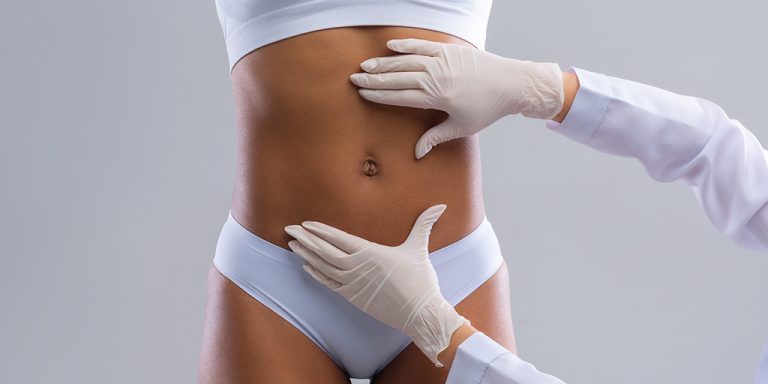Rhinoplasty to Relieve Allergies: Is it Right for You?
Posted on: September 12, 2023
Table of Contents
Rhinoplasty, commonly known as a nose job, is a surgical procedure that can improve the appearance and function of the nose. It can be used to correct structural defects, such as a deviated septum or asymmetrical nostrils, or to enhance aesthetic features, such as the size and shape of the nose. The goal of rhinoplasty is to create a natural-looking result that complements the patient’s facial features.
When rhinoplasty is performed for functional purposes, it is referred to as functional rhinoplasty. This type of surgery focuses on improving nasal airflow and breathing while still maintaining an aesthetically pleasing appearance. Functional rhinoplasty can be very beneficial for those who have difficulty breathing through their nose due to structural issues or chronic sinus problems.
In this article, we will discuss functional rhinoplasty in depth. We will discuss what is involved with the procedure, whether insurance may cover it, aftercare considerations, and other important information. By understanding all aspects of functional rhinoplasty, you can make an informed decision about whether this type of surgery is right for you.
What Is Involved with Functional Rhinoplasty?
Functional rhinoplasty is a type of surgery that focuses on improving the function of the nose, rather than its appearance. It is commonly used to treat conditions such as deviated septum, nasal obstruction, and sleep apnea. The goal of this procedure is to improve airflow through the nose and restore normal breathing.
Nasal Structure
During a functional rhinoplasty procedure, the surgeon may make changes to the internal structure of the nose. This includes reshaping or repositioning the cartilage and bone in order to open up airways and reduce any blockages. The surgeon may also remove excess tissue or polyps from the interior of the nose.
Airflow
The main focus of functional rhinoplasty is to improve airflow through the nose. To do this, the surgeon will often use techniques such as septoplasty (reshaping or removing part of the septum) or turbinate reduction (shrinking or removing parts of the turbinates). These procedures can help reduce resistance in the nasal passages and improve breathing.
In some cases, surgeons may also use minimally invasive techniques such as balloon sinuplasty or radiofrequency ablation to open blocked sinuses and improve airflow. These procedures are usually done in combination with traditional functional rhinoplasty to maximize results.
Functional rhinoplasty can be an effective treatment for a variety of conditions that affect breathing through the nose. It can help reduce snoring, improve sleep quality, and even alleviate symptoms associated with allergies and sinus infections. For many patients, it can provide long-term relief from uncomfortable symptoms without having to rely on medications or other treatments.
|
Procedure
|
Description
|
Benefits
|
|
Reshaping/Repositioning Cartilage/Bone
|
Making changes to the internal structure of the nose.
|
Improved airflow and reduced blockages.
|
|
Removal of Excess Tissue/Polyps
|
Removing excess tissue or polyps from the interior of the nose.
|
Improved airflow and reduced blockages.
|
|
Septoplasty
|
Reshaping or removing part of the septum.
|
Reduced resistance in nasal passages and improved breathing.
|
|
Turbinate Reduction
|
Shrinking or removing parts of the turbinates.
|
Reduced resistance in nasal passages and improved breathing.
|
|
Balloon Sinuplasty/Radiofrequency Ablation (Minimally Invasive)
|
Opening blocked sinuses and improving airflow. Usually done in combination with traditional functional rhinoplasty.
|
Improved airflow, reduced snoring, improved sleep quality, alleviated symptoms associated with allergies and sinus infections.
|
Will My Insurance Cover the Surgery?
When considering a functional rhinoplasty, it is important to find out if your insurance will cover the cost of the procedure. Although cosmetic surgery is not typically covered by most health insurance plans, there are some cases in which a functional rhinoplasty may be eligible for coverage.
Proof of Medical Need
In order for a functional rhinoplasty to be eligible for coverage, you must be able to demonstrate that the procedure is medically necessary. This means that you must have a medical condition or deformity that affects your ability to breathe properly and can be corrected with a functional rhinoplasty. Your doctor will need to provide documentation of your condition and explain why the surgery is necessary.
Consultation with a Doctor
Once you have determined that you meet the criteria for medical necessity, you should consult with your doctor about whether your insurance plan covers the procedure. Your doctor can review any documents from your insurance provider and explain what is covered and what is not. It is important to understand all of the details before proceeding with a functional rhinoplasty so that you know exactly what costs will be incurred.
Main Idea: Find out if insurance covers functional rhinoplasty. Key finding: Must demonstrate medical necessity to be eligible for coverage.
Aftercare and Recovery
Recovering from a functional rhinoplasty is an essential part of the process to ensure that the surgery was successful. While recovery times may vary depending on individual cases, there are some general guidelines to follow for aftercare and recovery.
Return to Normal Activities
Typically, patients can return to normal activities within two weeks of surgery. This includes going back to work or school if necessary. However, it is important to note that strenuous physical activity should be avoided during this time as well as any contact sports that could cause further damage to the nose. It is also important to avoid blowing your nose or picking at any scabs that may form in order to prevent infection.
Other Considerations
Patients should also be aware of potential side effects such as swelling and bruising around the eyes and nose area. This is normal and will subside over time but can make it difficult for patients to feel comfortable in public until it has gone away completely. Additionally, some medications may need to be taken after surgery in order to reduce inflammation and help with healing. Patients should consult with their surgeon before taking any medications or supplements in order to avoid any complications.
Finally, follow-up appointments with your surgeon are often recommended so they can monitor your healing progress and make sure everything is progressing as expected. These appointments may involve x-rays or scans in order to assess the changes made during surgery.
Overall, recovering from a functional rhinoplasty requires patience and diligence on behalf of the patient in order for the surgery results to be successful. Following all instructions given by your doctor will help ensure a smooth recovery and positive outcome from your procedure.
Conclusion
Functional rhinoplasty is a surgical procedure that can be used to improve the function of the nose and improve breathing. It involves reshaping the nasal structure and improving airflow. Whether or not your insurance will cover the surgery depends on whether you can provide proof of medical need and consult with a doctor. Aftercare and recovery following functional rhinoplasty includes returning to normal activities, as well as other considerations such as avoiding strenuous activities, taking medications as prescribed, and keeping follow-up appointments with your doctor.
Overall, functional rhinoplasty is a safe and effective way to improve nasal function. It is important to discuss all aspects of the procedure with your doctor prior to undergoing surgery in order to ensure you are making an informed decision about your health. With proper care before and after surgery, you can expect a successful outcome from your functional rhinoplasty procedure.




